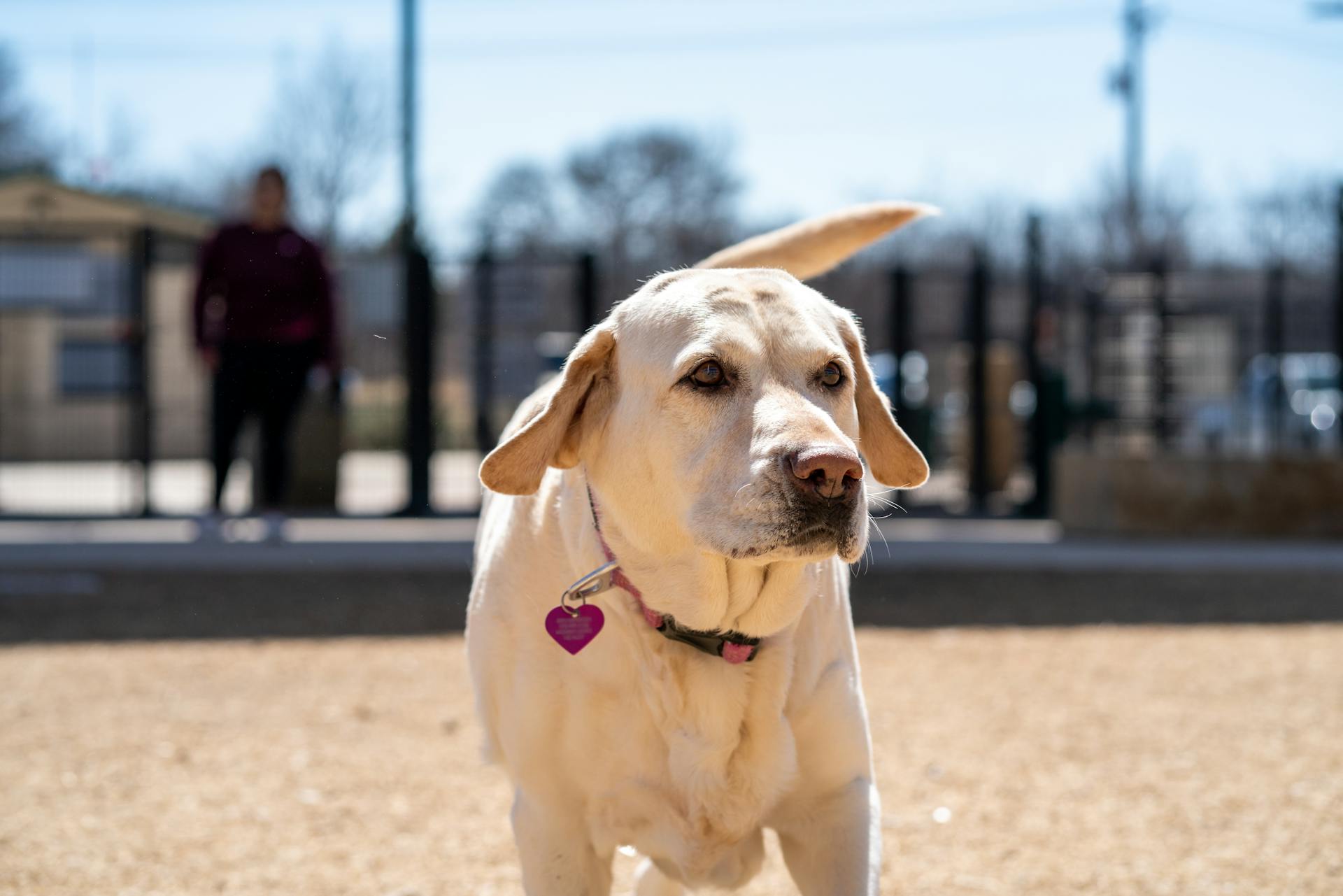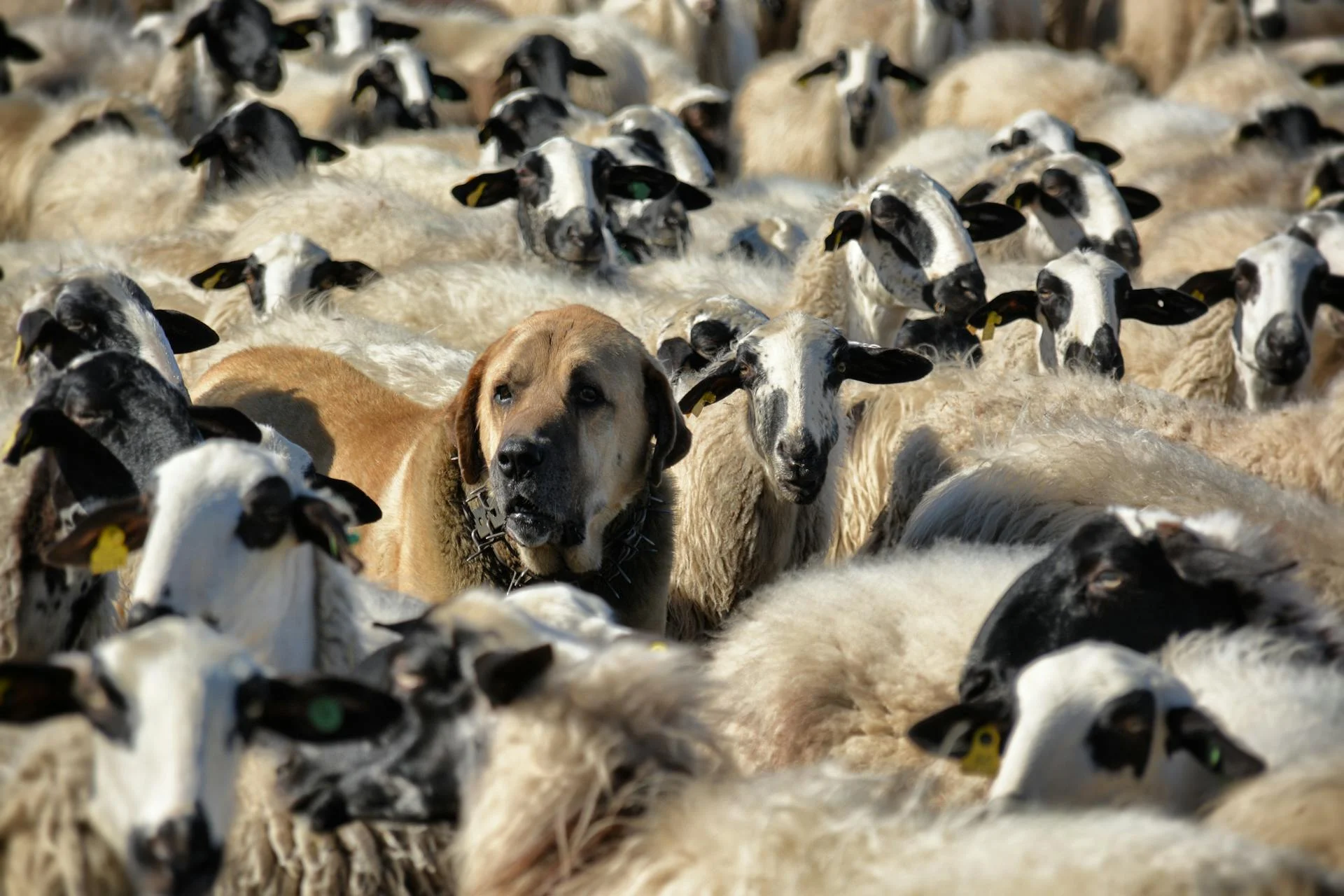
Livestock guardian animals are an essential part of any farm or ranch, providing a natural defense against predators and protecting your valuable livestock.
These animals are bred specifically for their guarding instincts and can be an effective alternative to traditional fencing methods.
Some popular breeds include the Maremma, Akbash, and Great Pyrenees.
These breeds have been used for centuries to protect livestock from predators and are known for their loyalty and protective nature.
Their thick coats and robust builds make them well-suited for harsh weather conditions and rugged terrain.
In addition to their physical characteristics, livestock guardian animals also require careful training and socialization to ensure they are effective and calm around people and other animals.
Characteristics and Traits
Livestock guardian dogs are large, powerful animals, but smaller dogs can also be effective at driving wild animals away from herds.
Their size provides advantages such as retaining heat longer, carrying more fat reserves, and being less likely to get bone fractures.
However, dogs that are too large can suffer from the heat, so they're used exclusively in northern regions and mountain pastures.
All livestock guardian dogs have a dense water-repellent coat, strong build, and independent disposition.
Differences in appearance reflect the climate in which these dogs live and work, with color determined by local traditions and the main color of the livestock.
These dogs are trustworthy, attentive, and protective, with the three qualities most sought after in a livestock guardian dog.
Dogs that follow the livestock closely assure that a guard dog is on hand if a predator attacks, while those that patrol at the edges keep would-be attackers at a safe distance.
At least two dogs may be placed with a flock or herd, depending on its size, the type of predators, and the intensity of predation.
Male and female livestock guardian dogs have proved to be equally effective in protecting livestock.
History and Working Features
Livestock guardian animals have a rich history that dates back thousands of years. They originated in Western Asia, specifically in modern Iran and Iraqi Kurdistan, around the 8th millennium BC.
In the early days, shepherding was a challenging job, and herding dogs were instrumental in helping humans manage livestock. They protected herds from wild predators, which were abundant at that time. This crucial role predetermined the characteristics of herding dogs, making them strong, vicious, courageous, and decisive.
These early livestock guardian dogs were able to stand alone against large predators and defend their herd. Archaeological findings show that joint remains of sheep and dogs date back to 3685 BC, tracing their ancestors to six thousand years ago. The land of their origin includes the territories of modern Turkey, Iraqi Kurdistan, and Syria.
Their use is recorded as early as 150 BC in Rome, and they're mentioned in the Old Testament, the works of Cato the Elder, and Varro. Images of livestock dogs can be found on ancient works of art, showcasing their importance in farming and herding.
Consider reading: Sheep Dog Herding
History
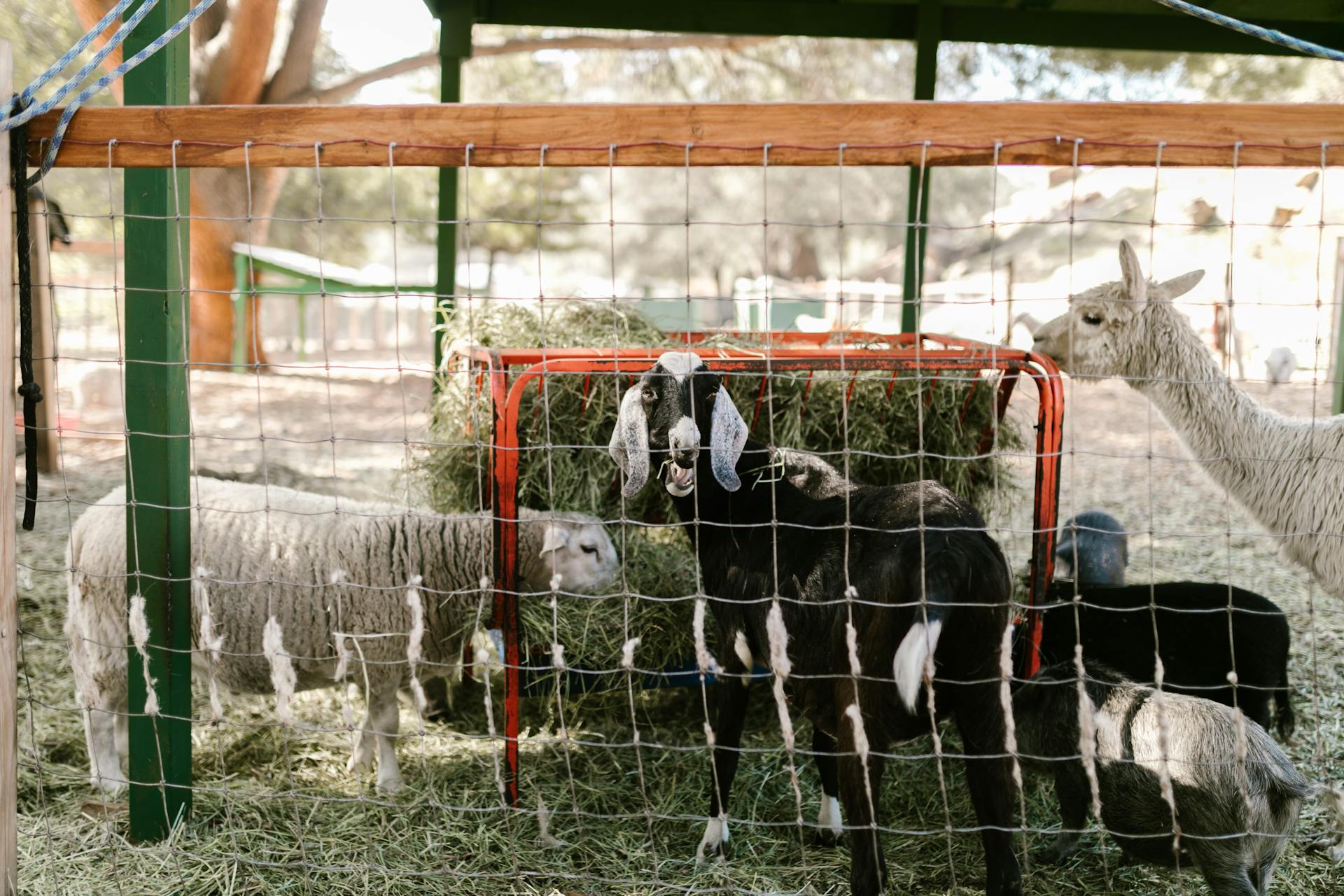
Herding dogs originated in Western Asia, on the territory of modern Iran and Iraqi Kurdistan, around 8-7th millennium BC. This is where domestication of sheep and goats began.
The first shepherds didn't have horses and had to manage livestock on foot, which made their job extremely difficult. Dogs that were previously helping humans hunt became assistants in farming.
The main task of early herding dogs was to protect herds from wild predators, which were very numerous back then. These dogs had to be strong, vicious, courageous, and decisive to stand alone against large predators.
Archaeological findings show that joint remains of sheep and dogs date back to 3685 BC. This is evidence that the ancestors of livestock guarding dogs can be traced back to six thousand years ago.
The land of their origin is considered to be the territories of modern Turkey, Iraqi Kurdistan, and Syria.
Check this out: Are Great Pyrenees Herding Dogs
Working Features
Livestock guardian dogs (LGDs) are incredibly effective at protecting livestock from predators. They do this by setting up and monitoring their territory regularly, which helps to deter predators from entering.
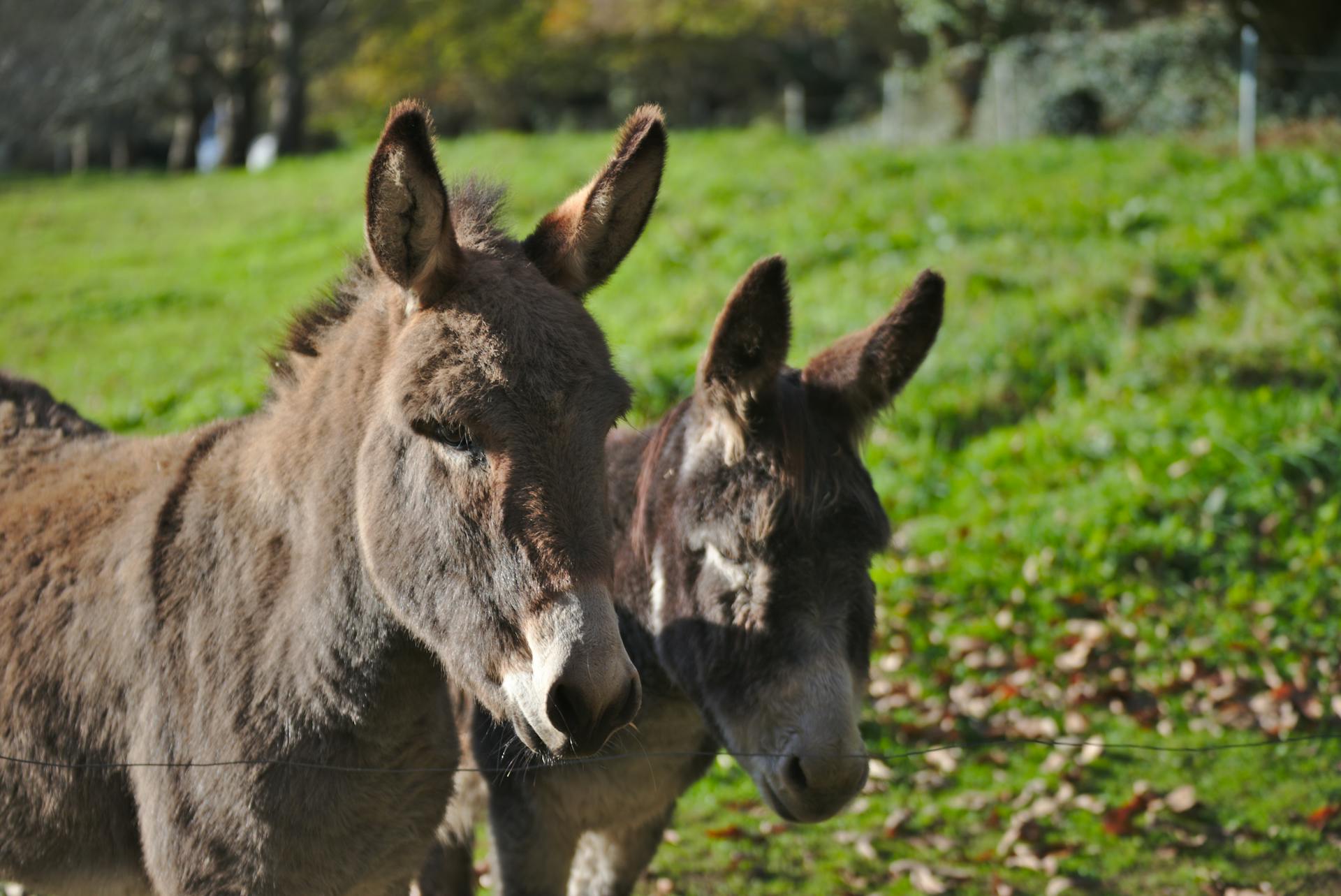
LGDs can be just as effective with one dog as with two, but the number of dogs needed depends on the size of the flock or herd, the type of predators, and the intensity of predation. For example, large operations or those with heavy predator loads may require more dogs.
In fact, male and female LGDs have been shown to be equally effective in protecting livestock. This is a key point to consider when deciding whether to use one or multiple dogs.
LGDs work in different roles, such as sticking close to the livestock, following the shepherd or rancher, or patrolling at the edges of the flock or herd. These differing roles are often complementary and can increase the effectiveness of the group of dogs in meeting specific predator threats.
Here are some key roles of LGDs:
- Guard dogs that stick close to the livestock to protect them from immediate threats.
- Patrol dogs that keep would-be attackers at a safe distance from the livestock.
- Alert dogs that alert other dogs to potential threats.
In most cases, LGDs prevent predator attacks through a display of aggressiveness, rather than through physical confrontation. This means that they can drive off predators that are larger or more powerful than themselves, such as bears and lions.
Physical and Behavioral Traits
Livestock guardian dogs (LGDs) are large, powerful dogs that provide a number of advantages as guardians. They retain heat longer and can go without food for longer.
Their size also allows them to carry more fat reserves and tolerate illnesses better. Their stride is longer, making them more efficient at long distances.
Differences in appearance among LGDs reflect the climate in which they live and work. A dense water-repellent coat and strong build are common traits among all LGDs.
Their independent disposition makes them well-suited for guarding livestock.
Physical Traits
LGDs are large, powerful dogs, although smaller dogs can drive wild animals away from the herd just as effectively.
Their large size provides them with several advantages, including retaining heat longer and carrying more fat reserves, which means they can go without food for longer.
Dogs that are too large, however, suffer more from the heat, so they're used exclusively in northern regions and mountain pastures.
Expand your knowledge: Big Mountain Dogs
All LGDs have a dense water-repellent coat and strong build, which helps them withstand harsh weather conditions.
Their independent disposition is also a key characteristic of LGDs, making them well-suited to working with livestock.
In hot areas, LGDs are often lighter in bone and shorter, which helps them cope with the heat.
The color of an LGD is often chosen based on the color of the livestock it's working with, as it's thought to make the animals calmer in the dog's presence.
For another approach, see: Cattle Working Dogs
What They Don't Do
Livestock guardian dogs don't chase herds or flocks around like herding dogs do.
They're not trained to kill predators, but rather to deter them from attacking livestock.
These dogs are essentially livestock bodyguards, not family pets.
They prefer to stay with the animals they protect, rather than following their owners around.
If a predator does attack, they won't let it happen without a fight.
Existential Identity
Livestock guardian dogs have been utilized around the world for hundreds of years.
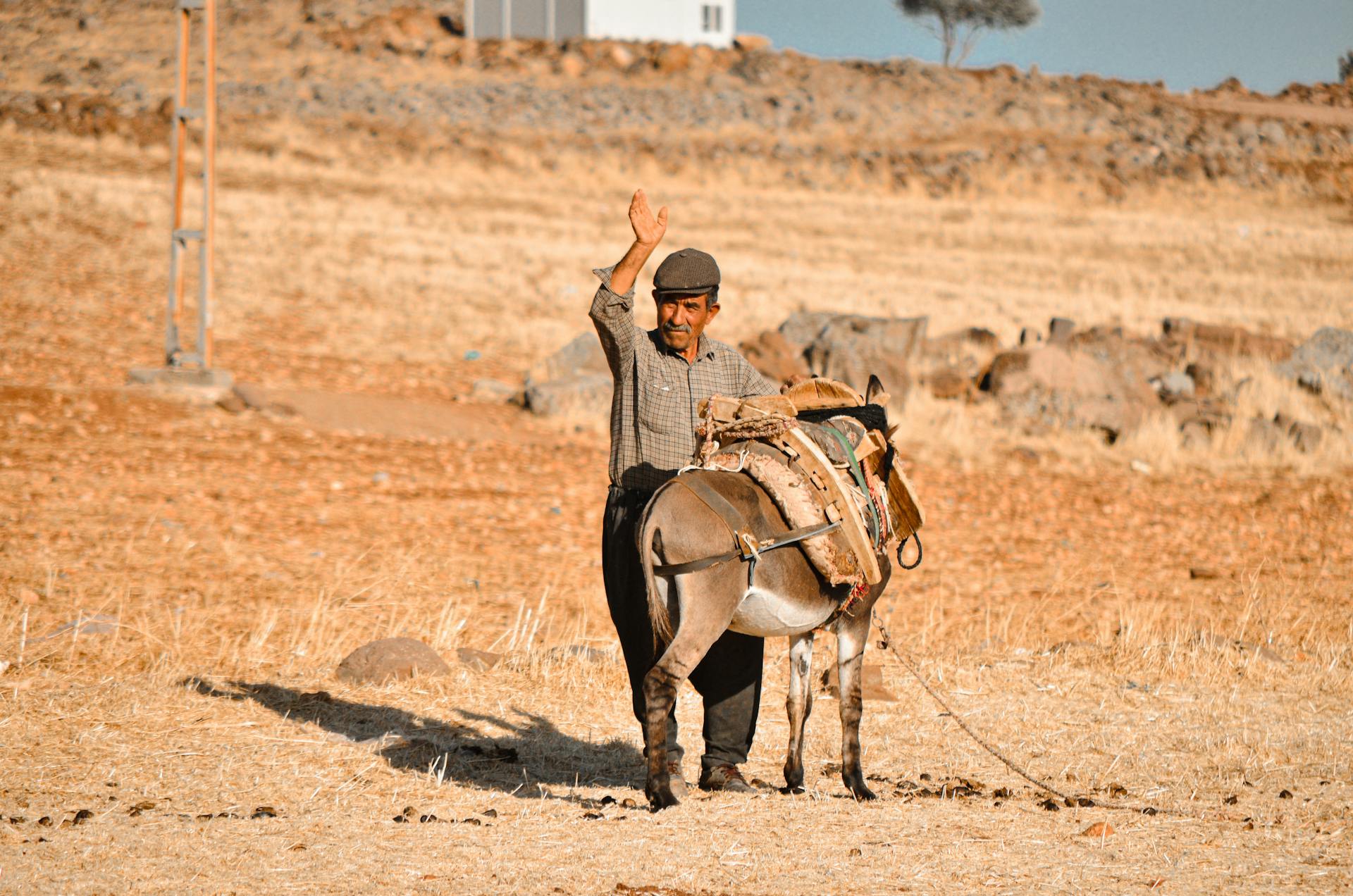
To be successful, these dogs require training and early exposure to the species they will be protecting. This early bonding is crucial for them to take on the role of protector.
Specialized breeding programs are in place to produce livestock guardian dogs with the natural instincts, temperament, and talent to protect livestock.
Care and Management
Spaying or neutering your guardian animal is crucial to prevent behavior issues, especially if you're not planning to breed them. Intact males can be aggressive towards the stock and humans.
Intact male dogs, in particular, are prone to wandering off, which can lead to trouble with your neighbors. An intact female dog may also let a wandering male canine into the pasture if she's in heat.
You'll need to budget for regular veterinary care, including vaccinations, deworming, heartworm prevention meds, and flea and tick prevention for dogs. Hoof care for donkeys and llamas, shearing for llamas, and dental care for donkeys and llamas are also essential expenses.
A fresh viewpoint: Bernese Mountain Dog Care
Feed your dogs properly to keep them healthy and able to do their job. A well-fed guardian dog is a happy and effective guardian dog.
You should keep your guardian dogs with the animals at all times. This allows you to catch them, take them on a leash, get them yearly vaccinations, and feel safe with them.
A fresh viewpoint: How to Keep Great Pyrenees on Property
Specific Breeds and Uses
The Great Pyrenees is a popular breed of Livestock Guardian Dog (LGD) that originated in the Pyrenees Mountains in Europe. They are gentle towards livestock and children, and fearless towards unwanted predators.
Their height ranges from 26-32 inches, and they weigh between 80-120 pounds. They have a lifespan of 10-12 years.
These dogs are naturally nocturnal, which means they can stay up and interact with your livestock all evening. This makes them a great choice for farmers who need to protect their animals at night.
Here are some key characteristics of the Great Pyrenees breed:
The Aidi is another breed of LGD that originated in Morocco. They are known for their intelligence and protective instincts, making them a great choice for farmers who need to protect their animals from predators.
The Aidi breed has several other names, including Aïdi, Atlas Mountain Dog, and Berber Dog. They are native to the Atlas Mountains in Morocco.
The Aidi is a medium-sized dog that is well-suited for guarding livestock in rugged terrain. They are intelligent and independent, but also loyal and protective of their flock.
The Aidi breed has a number of characteristics that make them well-suited for guarding livestock, including their intelligence, protective instincts, and independence.
Readers also liked: Aidi
Frequently Asked Questions
What are the best guard animals against coyotes?
Llamas, alpacas, and donkeys are effective guard animals against coyotes, requiring less training than guardian dogs. They can be a great choice for ranchers seeking a low-maintenance solution to protect their livestock
What are the livestock guardian animals for sheep?
Livestock guardian animals for sheep include guardian dogs, llamas, and donkeys. These animals can effectively deter predators and protect sheep flocks.
Are livestock guardian dogs aggressive to people?
Livestock guardian dogs (LGDs) are bred to be defensively aggressive, but their reaction to a threat can vary in speed and intensity. While they may appear aggressive, their primary goal is to protect their flock, not people.
Sources
- https://www.dogster.com/dog-breeds/livestock-guardian-dog-breeds
- https://en.wikipedia.org/wiki/Livestock_guardian_dog
- https://agrilifetoday.tamu.edu/2023/10/23/livestock-guardian-dogs-unsung-heroes-of-the-livestock-protection-business/
- https://www.americanwool.org/livestock-guardian-dogs/
- https://attra.ncat.org/publication/livestock-guardian-animals-protecting-the-flock-or-herd/
Featured Images: pexels.com

